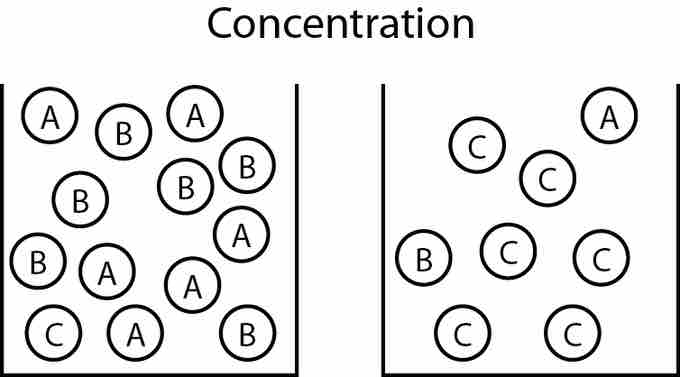If a chemical system at equilibrium experiences a change in concentration, temperature, volume, or partial pressure, then the equilibrium shifts to counteract the imposed change. A new equilibrium is established. This principle has a variety of names; in chemistry it is known as Le Chatelier's principle.
Because products and reactants in a chemical equation do not always have the same number of moles, as demonstrated in , disturbances in the concentration of atoms can affect the equilibrium. Changing the concentration of an ingredient will shift the equilibrium toward the side that reduces the concentration change. The chemical system will attempt to partially counteract the change imposed on the original state of equilibrium. In turn, the rate of reaction, extent, and yield of products will be altered in correspondence with the impact on the system.

Changes in Concentration
In the course of a reaction, the total number of molecules can change. For instance, multiple molecules of the reactants (A and B) must be used to form a single molecule of product (C).
This can be illustrated by the equilibrium of carbon monoxide and hydrogen gas reacting to form methanol.
Suppose we were to increase the concentration of CO in the system. Using Le Chatelier's principle, we can predict that the amount of methanol will increase, decreasing the total change in CO. If we add a species to the overall reaction, the reaction will favor the side opposing the addition of the species. Likewise, the subtraction of a species would cause the reaction to fill the 'gap' and favor the side where the species was reduced. This observation is supported by the collision theory. As the concentration of CO is increased, the frequency of successful collisions of that reactant would increase also, allowing for an increased forward reaction—increased generation of product. Even if a desired product is not thermodynamically favored, the end-product can be obtained if it is continuously removed from the solution.